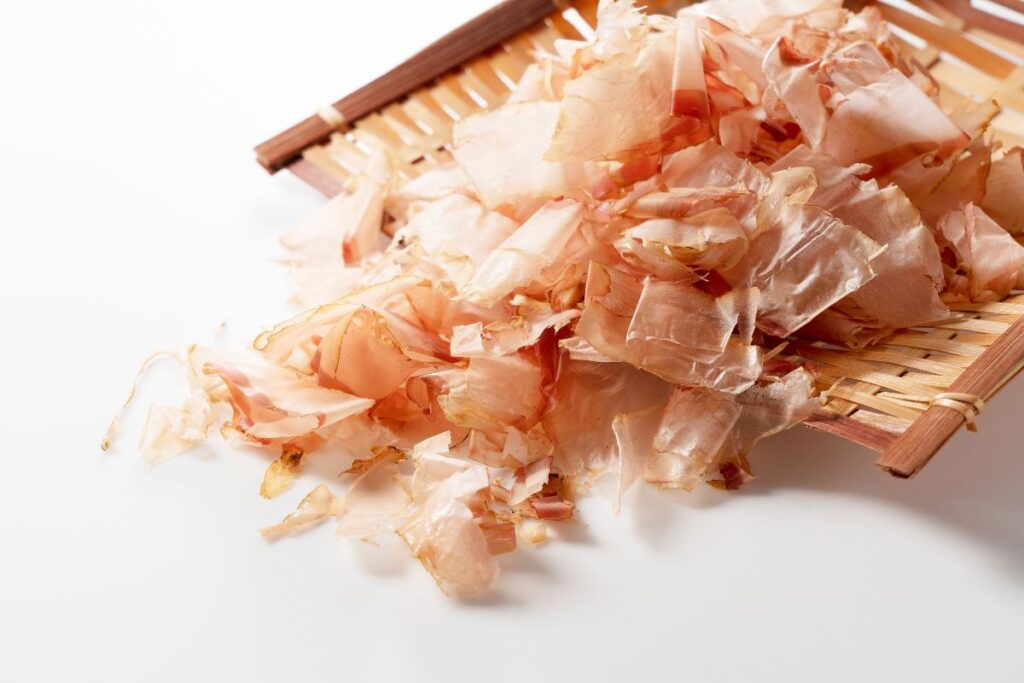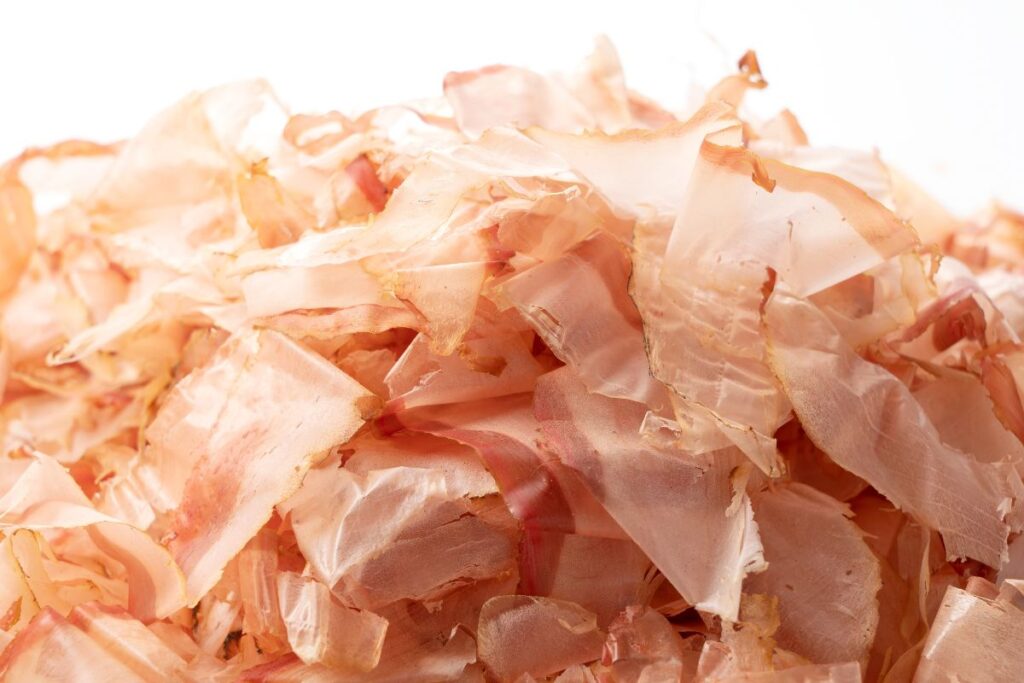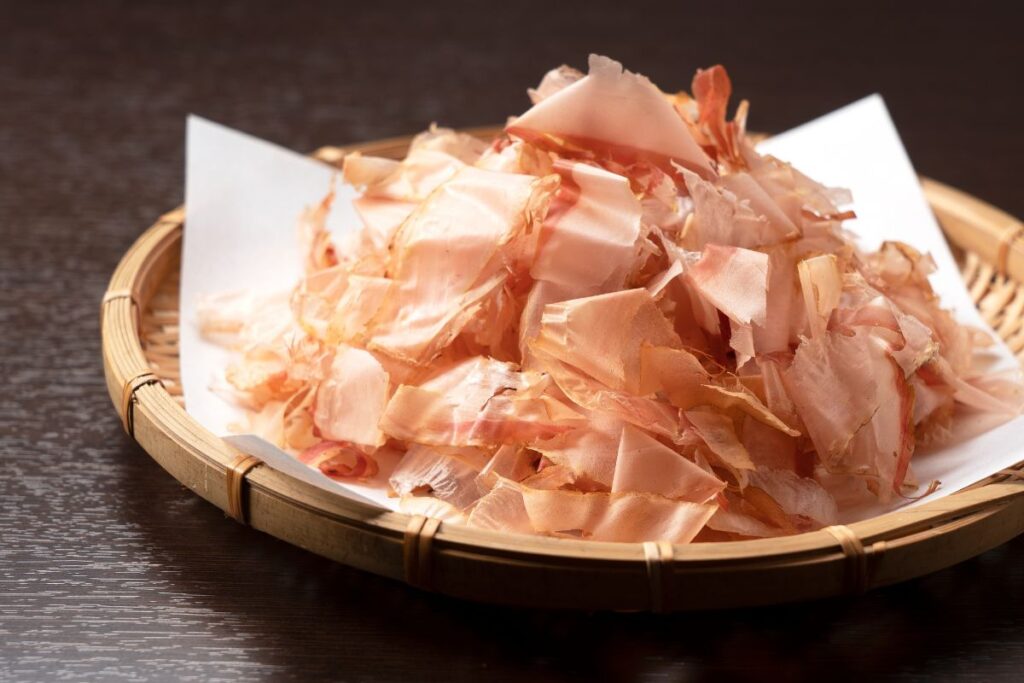Step into the bustling streets of a Japanese market, where the air is filled with an intoxicating blend of aromas. Amidst the sea of exotic ingredients, your eyes are drawn to a stall devoted solely to katsuobushi – dried bonito flakes.
These delicate, smoky flakes have transcended their humble origins to become a cherished ingredient in Japanese cuisine.
But what is it about katsuobushi that has captivated the hearts and taste buds of culinary experts and food enthusiasts alike?
Prepare to embark on a journey that delves into the depths of katsuobushi, uncovering its rich history, intricate craftsmanship, and the cultural traditions that have shaped it into a true culinary treasure.
Get ready to experience a world of flavors and discover why katsuobushi is so much more than a simple garnish for your miso soup.
The Origins of Katsuobushi
Katsuobushi, a staple in Japanese cuisine, traces its origins back to the preservation techniques of ancient fishermen. These early culinary pioneers discovered that drying and fermenting the bonito fish not only prolonged its shelf life but also intensified its flavor.
This wasn’t an accidental find; it was a deliberate effort to harness nature’s bounty for year-round sustenance.
As you explore further, you’ll realize that katsuobushi’s development wasn’t stagnant. It evolved. Fishermen and chefs refined the process over centuries, perfecting the art of creating these umami-packed flakes.
They weren’t just preserving fish; they were crafting an ingredient that would become foundational to Japanese cooking.
Understanding katsuobushi’s origins empowers you to appreciate its role in your kitchen. It’s not merely a flavor enhancer; it’s a link to a tradition that mastered the art of preservation.
By integrating katsuobushi into your dishes, you’re not just following recipes; you’re embodying a centuries-old practice of culinary excellence. You’re in control, wielding an ingredient that has stood the test of time.


Crafting the Flakes
Diving into the heart of the process, you’ll find that crafting dried bonito flakes involves a meticulous technique honed over generations.
Initially, you’ll start with a fillet of bonito, a type of tuna renowned for its robust flavor. This isn’t a quick process; it demands patience and precision.
After cooking the fillet, you’ll smoke it meticulously, controlling the smoke’s intensity to imbue the fish with a deep, smoky essence. This step isn’t rushed; it can take several weeks, requiring constant attention to ensure the flavor penetrates thoroughly.
Next, you’ll enter the drying phase, exposing the smoked fillet to the elements. This stage is pivotal; it’s where you’ll harness the power of nature to further concentrate the bonito’s flavor.
Sunlight, wind, and temperature are all factors you’ll manipulate to achieve the perfect dryness. This can take months, but it’s crucial for developing the flake’s distinct taste and texture.
Culinary Applications of Katsuobushi
Once you’ve mastered the art of crafting dried bonito flakes, you’ll discover their transformative power in a myriad of culinary creations.
These flakes aren’t just an add-on; they’re a secret weapon to elevate your dishes with a burst of umami. Let’s dive into how you can harness their potential.
Start by using them as a topping. Sprinkle over rice, soups, or salads to add a smokey depth. You’ll notice how they subtly enhance the flavor without overpowering the dish. It’s all about balance, and you’re in control of the final taste profile.
Incorporate them into your sauces and broths. A small quantity can radically transform a simple broth into an umami-packed base for noodle dishes or stews. Experiment with the amount; you’ll find the sweet spot where the flavor peaks.
Don’t shy away from using them as an ingredient in your marinades. They’ll impart a unique flavor to meats or tofu, setting your barbecue or stir-fry apart from the usual.


Nutritional Benefits of Katsuobushi
Beyond enhancing flavors, dried bonito flakes also offer significant nutritional benefits that can support your overall health. Packed with high-quality protein, they’re an excellent addition to your diet, particularly if you’re looking to build or maintain muscle mass.
The flakes are also a great source of omega-3 fatty acids, which are crucial for heart health and can help you manage your cholesterol levels more effectively.
Moreover, dried bonito flakes contain various vitamins and minerals, including B vitamins, which are vital for energy metabolism and maintaining optimal brain function.
They’re also rich in iron, an essential component for blood production and preventing anemia. Plus, the presence of selenium in these flakes supports your immune system and provides antioxidant benefits, helping you ward off illnesses and recover faster when you’re under the weather.
Incorporating dried bonito flakes into your meals can thus be a strategic move. They not only elevate your dishes with a burst of umami but also empower you with control over your nutritional intake, supporting a healthier lifestyle.
By choosing to add these flakes to your diet, you’re taking a straightforward step towards enhancing your well-being.
Cultural Significance
While exploring the nutritional benefits of dried bonito flakes enhances your understanding of their health impact, appreciating their cultural significance offers a deeper insight into their role in global cuisines.
You’ll find that these flakes aren’t just an ingredient; they’re a symbol of tradition and innovation in culinary practices.
In Japan, where they’re known as katsuobushi, their use spans centuries, highlighting an unwavering respect for the delicate balance of flavor they bring to dishes.
They’re a cornerstone of dashi, the umami-rich broth that forms the backbone of much of Japanese cuisine. This isn’t just about adding taste; it’s about embracing a philosophy of cooking that values subtlety and depth.
Beyond Japan, chefs worldwide have begun incorporating katsuobushi into their dishes, experimenting and blending traditional and modern techniques.
You’re witnessing a culinary crossover that respects tradition while pushing boundaries. It’s a testament to the versatility and enduring appeal of these flakes.
Conclusion
As you’ve journeyed through the world of katsuobushi, you’ve uncovered its rich origins, meticulous crafting process, diverse culinary applications, and significant nutritional benefits.
It’s not just a food item; it’s a cultural emblem, deeply woven into the fabric of culinary tradition. Remember, every time you sprinkle these savory flakes onto your dish, you’re not just enhancing its flavor—you’re embracing a piece of history.
However, we understand that everyone may not share the same enthusiasm for katsuobushi. Some may argue that its strong umami flavor can overpower other ingredients and may not be to everyone’s taste.
We respect different perspectives and would love to hear your thoughts on this. Do you agree with this contrarian view? Or do you believe that the unique taste of katsuobushi adds depth and complexity to a variety of dishes?
Leave a comment below and let’s start a conversation about the diverse opinions surrounding this beloved ingredient. So, go ahead, let katsuobushi transform your meals and connect you to a timeless tradition.




Konnichiwa! (Hello!) I'm Pat Tokuyama, a Japanese tofu cookbook author, who travels for music, food, and adventure. If you like Japanese tea, checkout some of the newestorganic japanese tea, matcha bowls and noren and more!
** Curious about the Plant Based Japanese Cooking Club? ** Learn more here!